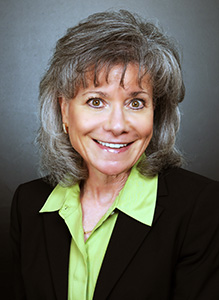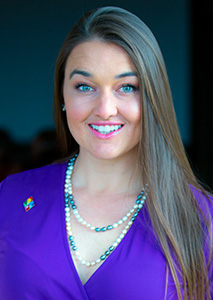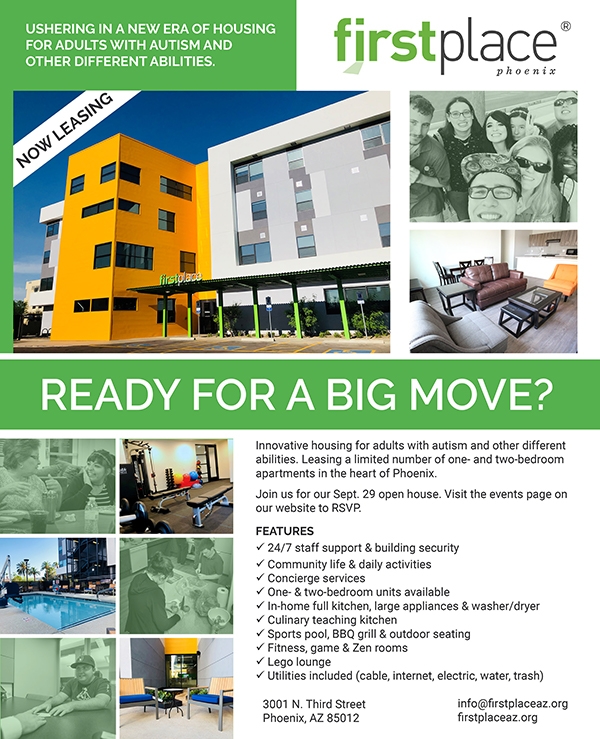Exciting new models for supportive housing are emerging, changing the landscape and raising the bar on dreams and expectations for the neurodiverse population. Far too many young adults are graduating from high school to the couch. They are socially isolated, unemployed or underemployed, and disconnected from the community (Roux, Rast, Rava, Anderson, & Shattuck, 2015). Compounding the urgency of the situation are the nearly one million adults with intellectual and/or developmental disabilities (IDD) living with a caregiver over age 60 (Braddock et al., 2017).
People with IDD or brain injuries, seniors and veterans all represent groups in need of additional assistance and support options to live as independently as possible and to thrive in their community. Group homes are not meeting the demand and are no longer the only residential option for adults with autism and others with IDD. Across the country, pioneering leaders and parents are working with local communities to create more options. Elements of a viable marketplace that develops housing inspired by this population are forming and the delivery of marketplace options cannot happen soon enough.

Denise D. Resnik
First Place AZ

Desireé Kameka
Madison House Autism Foundation
An Innovative Example: First Place-Phoenix
Using the knowledge gathered in 20 years of research, support from the Urban Land Institute and the expertise of more than 100 collaborators, First Place-Phoenix represents a new residential prototype and allows greater life choice based on individual needs and interests.
Set in the heart of the urban region, the $15.4 million, 81,000-square-foot First Place-Phoenix property offers three primary components:
- Neurodiverse residents of the 55 First Place Apartments enjoy a suite of services and amenities, with all the benefits of community-connected living: transportation, healthcare, employment, continuing education and recreation.
- Participants enrolled in the two-year First Place Transition Academy, operated by SARRC, benefit from the two-year Learn4IndependenceTM curriculum of 32 semester-length courses focused on independent living skills, helping them integrate into the fabric of the community as citizens, neighbors, employees and friends.
- The First Place Global Leadership Institute is a catalyst for advancing replicable options – a center where families, people with autism and thought leaders collaborate on housing solutions through training, education, research and public policy. The Institute is focused on 10 priority areas shaping where we go next with more housing and community options for special populations.
As a first new property, First Place-Phoenix is a pioneering property representing new ideas and innovation. It also illustrates several of the design goals and guidelines cited in Opening Doors (found in Exhibit A), based on economic sensibilities and the segment served.
First Place is designed for those with support needs and some form of functional communication. They have a desire to live more independently and participate more fully as part of the greater community through employment, lifelong education, health and wellness, recreation and interests of their choosing. Set in the heart of Phoenix, First Place is within walking distance of light rail and public transit, in close proximity to supportive, welcoming neighbors.
Technology is prevalent throughout the property, aiding in the security and safety of residents. It encompasses an electronic keycard system, a resident information and communications platform, entertainment and recreational options, and various educational workshops, trainings and meetings. It was a conscious choice not to automate all home features allowing residents to walk into their homes and simply push buttons to turn on lights, raise blinds and adjust the thermostat. Our intention was not to make life so automated that it could preclude someone from honing their independent living skills before transitioning to their next place after First Place.
NOTE: First Place-Phoenix is not a group home or a licensed congregate care or assisted living facility. The property is not designed for those with self-injurious or aggressive behaviors.
Research Informing Important Elements for Building Community
The first study focusing on the residential concerns of adults with autism and related disorders was published in 2009. It was produced to advance the development of replicable residential models offering quality, affordable housing options within the fabric of their communities. Opening Doors: A Discussion of Residential Options for Adults Living with Autism and Related Disorders (2009) was a collaborative project by the Urban Land Institute Arizona, Southwest Autism Research & Resource Center (SARRC), Arizona State University’s Stardust Center for Affordable Homes and the Family, and the ASU Herberger Institute School for Design and the Arts. The study explored market demand and concerns, financial frameworks, residential models, and home design.
Opening Doors was a catalyst for the launch of the Autism Housing Network (AHN), a project of the Madison House Autism Foundation, in response to barriers identified in the study. AHN is the only online platform that offers a hub of housing information and connects a network of innovators with home seekers, project starters and existing residential options. The AHN Housing Directory uses a set of filters to describe different options, and the AHN’s Virtual Tour of Housing and Support Models video series describes 18 different models, both traditional and emerging. While AHN is an excellent starting resource to begin to define the market, research is not yet available to share on what it takes to build an inclusive, successful, move-in-ready environment.
In the broader community development research, the Knight Foundation wanted to find out what attracts people to the place they live and described 10 top domains driving community attachment in its Soul of the Community report (2010). Interestingly in the 26 communities they studied, three specific elements rose repeatedly to the top: Social Offerings (places for people to meet each other and the feeling that people care about each other), Openness (how welcoming the community is to different types of people), and Aesthetics (the physical beauty of the community including the availability of parks and green spaces).
Using data from what impacts community outcomes in the neurotypical and neurodiverse population, we must create more supportive housing opportunities for the diverse market segment of special populations—both in the number of supportive housing units and through a range of home and service options. What we call these different housing options with different service delivery systems for people with high-, moderate- and low-support needs is still vague.
A One-Size-Fits-All Approach Won’t Work – Identifying What Does
Whether their home is for a season or a lifetime, members of special populations should be given the opportunity to benefit from a full array of choices. IDD-inspired amenities and supports may include assistive technology, transportation options, sensory-friendly and accessible design, skill-building programs, community support navigators, planned social activities and more.
Currently, we are unable to measure outcomes of these newer, emerging models. National databases that collect outcome data, such as the National Core Indicators, do not accommodate non-Medicaid-funded options or track different types of housing in consumer-controlled models. With this evolution of housing and support systems, as well as ever-increasing demand, we must define the marketplace of residential options for neurodiverse populations by creating the foundational nomenclature for different housing and service delivery models, and track outcomes through quality of life indicators. We must better equip public, private, philanthropic and nonprofit sectors—individually and collaboratively.
So, what is that next place? How is it structured—operationally, financially, culturally? How does the marketplace define and recognize what works for residents after they leave First Place? There is no “one size fits all” solution. Not everyone is right for every property. Do we try to create a prototype for everyone or nothing for all? Or do we develop options that respect diversity in our population and offer more choices, just like the general marketplace does?
Consider that we are today with housing for special populations where senior housing started some 50 years ago. Then consider all the choices those seniors can access from the opportunity to “repurpose” their careers or pursue a plethora of hobbies and interests to a focus on vital medical and/or mobility issues. A mature market affords a broader mix with healthy competition, rewarding those committed to the creation of more viable options.
Proposed Study to Define the Marketplace
As part of developing and enabling a marketplace to mature, we need to start speaking the same language. In many cases, we do not even have the words or definitions in various sectors to empower consumers to communicate what they want and need.
Led by First Place AZ and AHN, and together with leaders from across the country, we are advancing—and actively seeking support for—a sister study to Opening Doors offering a market analysis that includes universal nomenclature to describe the various housing models and long-term support service options available to potential developers and neurodiverse populations. The report will also include research on the assessment/evaluation processes for individuals with autism or other IDD, including the alignment of support needs and interests in preparation for transitioning to their homes.
Empowered with this information, we are also prepared to offer strategies for cultivating neighborhood collaborations and integrated communities, along with a “Supportive Housing Development Toolkit” compiling promising and best-practice models of various housing developments.
Ultimately, this overview and analysis will present the universal language offering a clear description of housing and support models despite variations among state government authorities, residents and families benefiting from improved and easier transition and long-term assimilation plans, as well as scarce funding saved from poor planning or misplacements. Most importantly, it will offer suggestions for creating accepting community cultures to enhance the lives of residents, resulting in opportunities for higher employment rates, increased support system, and reduced medical or other provider expenses.
We will be introducing our first think tank advancing this important body of work at the First Place Global Leadership Institute fall symposium this October, 2018, in Phoenix: https://firstplacesymposiumfall2018.splashthat.com/.
Working together, we can build, grow and align communities to serve the vast and diverse needs of people with autism and other neuro-diversities by building a marketplace that is not only recognized and rewarded through market principles but documented through outcomes. By developing new tools tracking quality of life and other factors, we can collectively determine whether emerging models are effecting the desired change and, if not, offer recommendations for how to achieve the desired change.
Without supportive housing options, local communities will disregard and miss out on the important talents and contributions of their neurodiverse citizens. We can create models for shared alliances and leveraged resources that encourage more public and private home and community options serving vulnerable adults and reduce overburdened government budgets. Now is the time for exploration, explanation, engagement and expansion of supportive housing development across North America. A new generation of dynamic housing models is only possible by collectively tapping private, government, nonprofit and charitable interests—and that includes us all.
Graduating to the couch should not be the only option for young adults with developmental disabilities. We are already seeing them successfully navigate college, find their niche in the workforce, give back through volunteering, and be included in neurotypical social circles in the community. We are raising the bar on expectations, new realities—and dreams.
Desireé Kameka is Director of Community Engagement and Housing Networks, Madison House Autism Foundation. For more information, email info@madisonhouseautism.org, call (240) 246-7140 and visit www.madisonhouseautism.org.
Denise D. Resnik is Founder & President/CEO, First Place AZ. For more information, email info@firstplaceaz.org, call (602) 464-6620, and visit www.firstplaceaz.org.
References
Ahrentzen, S., Barger, T., Blackbourn, J., Bosworth, G., et al. (2009) Opening Doors: A Discussion of Residential Options for Adults with Autism and Related Disorders. Urban Land Institute, AZ, Southwest Autism Research and Resource Center, and Arizona State University, Phoenix, AZ.
AHN Virtual Tour of Housing Options. (n.d.). Retrieved from http://www.autismhousingnetwork.org/education/virtual-tour-housing-options/
Autism Housing Network. (n.d.). Retrieved from http://www.autismhousingnetwork.org/ Madison House Autism Foundation
Braddock, D. L., Hemp, R., Tanis, E. S., Wu, J., & Haffer, L. (2017). The State of the States in Intellectual and Developmental Disabilities (11th ed.). Washington, DC: American Association on Intellectual and Developmental Disabilities.
First Place AZ. (n.d.). Retrieved from https://www.firstplaceaz.org/
First Place Global Leadership Institute. (n.d.). Retrieved from https://www.firstplaceaz.org/leadership-institute/overview/
First Place Transition Academy. (n.d.). Retrieved from https://www.firstplaceaz.org/transition-academy/overview/
Knight Soul of the Community 2010 Knight Communities Why People Love Where They Live and Why It Matters: A National Perspective (Rep.). (2010). Gallup.
National Core Indicators. (n.d.). Retrieved from https://nationalcoreindicators.org/ Human Services Research Institute (HSRI), The National Association of State Directors of Developmental Disabilities Services (NASDDDS).
Roux, A., Rast, J., Rava, J., Anderson, K., & Shattuck, P. (2015). National Autism Indicators Report: Transition into Young Adulthood. Philadelphia, PA: Life Course Outcomes Research Program, A.J. Drexel Autism Institute, Drexel University.







With the aging population of individuals with ASD, parents are indeed at a lost on how and where their
Adult child can live a fulfilled independent life. Residential care homes have quite lost their appeal to these individuals due to limited quality care, programs and services. I, as a parent of one, am glad to see other independent living options for new models for supportive housing such as First Place- Phoenix. It’s a dream of each family for such a much needed option.
We can’t wait for agencies and others to create housing for adults with disabilities anymore. We have to just do it ourselves. I’m thrilled this company offers duplication. It would benefit many communities to have this in every city. Blessings to you all.
[…] the same language by creating a universal nomenclature of supportive housing models while segmenting the population based on their needs and […]